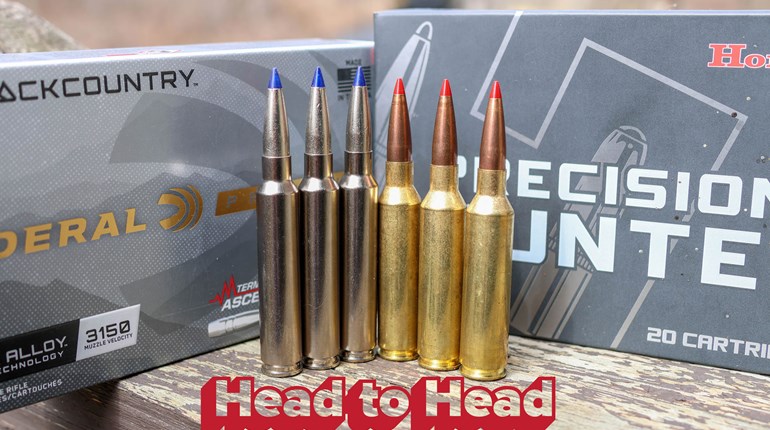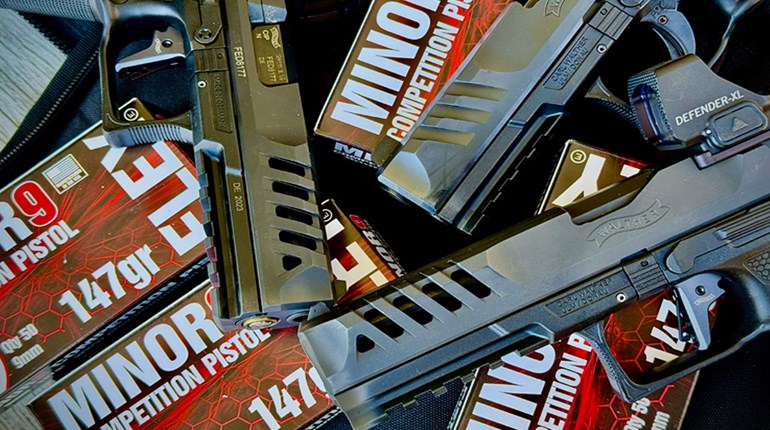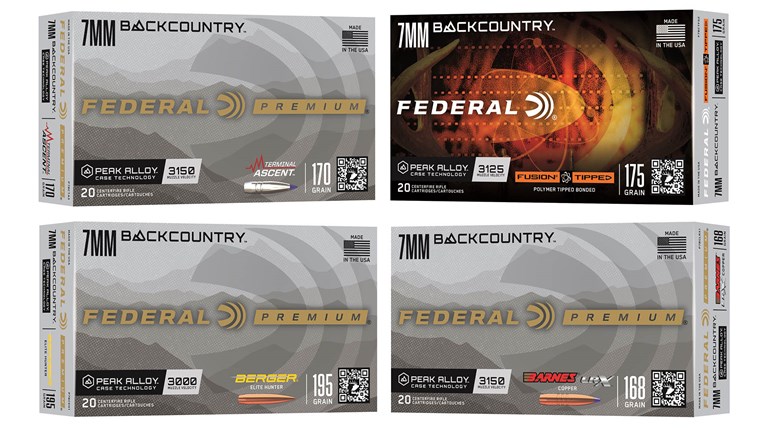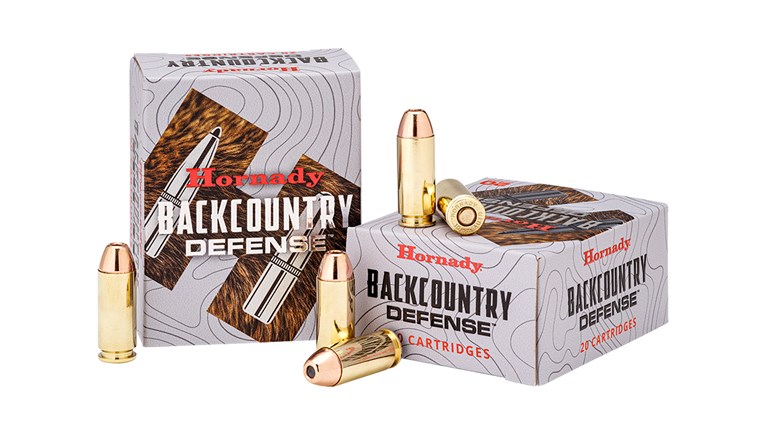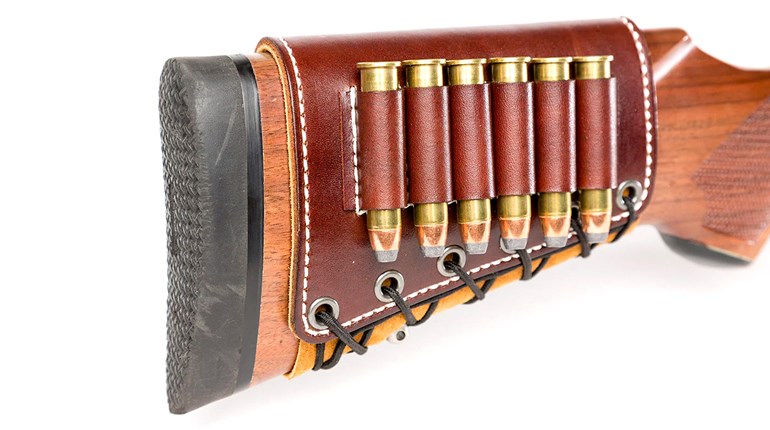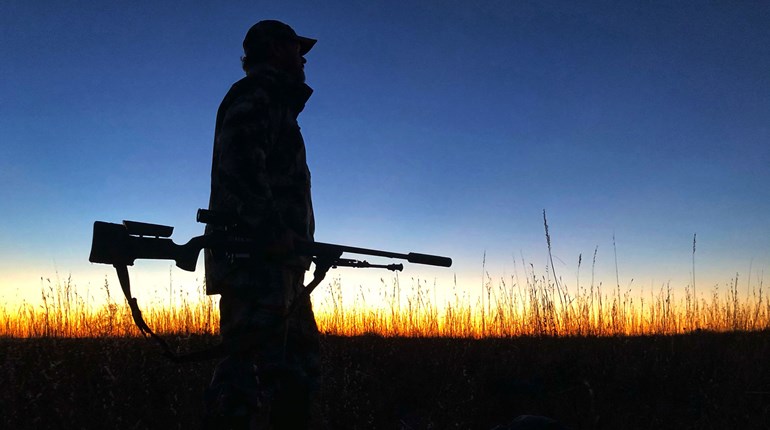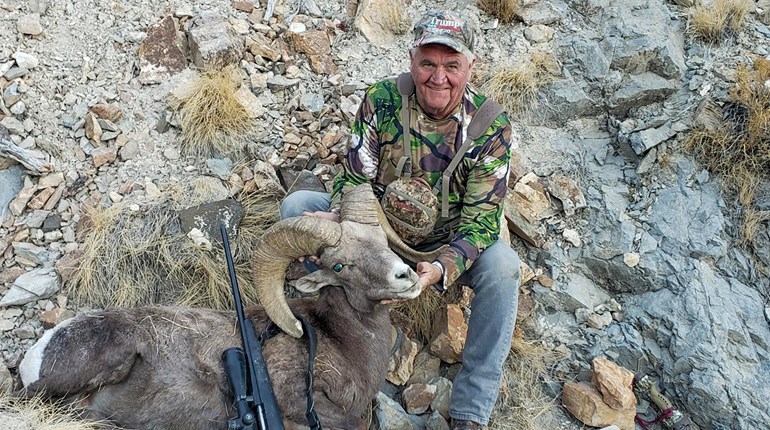
I have always had a penchant for old cartridges, especially those which were associated with the Age of Exploration. While they are made of the same brass, lead and copper that modern cartridges use, there is an inexorable connection to a bygone era, and using one which has faded into obscurity gives yet another dimension.

As a much younger man, I would pore over the stacks of reloading manuals I could get my hands on, soaking up the histories and statistics of those cartridges I had read about in the meager book collection I had at the time (which has since morphed into the Massaro Library of Useless Africana). One of the more memorable reading sessions—and one I vividly remember—is Craig Boddington’s dissertation on the .318 Westley Richards in the Barnes No. 2 reloading manual. Reviewing the history of Barnes’ Bullets, Boddington highlighted a swaged-down Barnes Original lead-core bullet, which was modified from .338-inch-diameter down to .330-inch-diameter, for use in his .318 Westley Richards. At that time, I had no idea that I’d become friends with and a colleague of Col. Boddington, let alone become intimately acquainted with the .318 Westley Richards.
Back in 2016, I embarked on a journey to convert a 1916 Mauser Gewehr 98 in to a .318 Westley Richards, hoping to spark a resurgence of interest in the classic cartridge, and to some small degree, it has worked. Old rifles are once again heading afield, and new rifles are being built, though we still lack a couple of key parts of the equation to fully claim a comeback. Let’s look into what the .318 Westley Richards was, is, and shall be.

The first decade of the 20th century saw the combination of smokeless powder and copper jacketed bullets take firm roots in the hunting world, on a global scale. Safari was underway in the northeast of Africa, and Indian shikars were a full-blown pastime for British soldiers and visiting sportsmen. The various gunmakers across the U.K. fulfilled the needs of the travelling sportsmen with cartridges of ever-increasing potency, and (apparently) ever-shrinking bore diameters. Where the .450-inch-bore was the darling of the late 19th century among hunters, the military designs like the 7x57mm Mauser showed how well a small-bore rifle could perform on game animals.
Though the actual release date is vague, somewhere between 1906 and 1910 the .318 Westley Richards—also known as the .318 Rimless Nitro Express and the .318 Accelerated Express—joined the ranks of the .404 Jeffery, .333 Jeffery and 9.3x62mm as the up-and-coming hunting cartridges of the era. The world hadn’t yet heard of the .375 H&H or the .416 Rigby. Developed by the prestigious firm of Westley Richards, it is a rimless design, using its 25-degree shoulder for headspacing, a case length of 2.380 inches and a base diameter of 0.464 inches; the bullet diameter is .330 inches, despite the cartridge’s nomenclature. The maximum cartridge length is listed at 3.349 inches, though I have measured original Kynoch factory ammunition at 3.395 inches. This data set means the .318 Westley Richards will fit just fine in the Mauser 98 or P14 Enfield bolt action rifle.

There were two loads offered for the .318 Westley Richards: a 180-grain LT copper capped bullet (named for and designed by Westley Richards employee Leslie Taylor) at 2700 fps, and the 250-grain softpoint and solid bullets at 2400 fps. The 250-grain bullets were, by far, the popular choice for all game, from smaller antelopes up to and including the elephant.
The 250-grain bullets—with a sectional density of .327—at that moderate velocity resulted in phenomenal penetration, and that was a big part in earning the reputation as one of the finest all-around calibers available, in when competing with the .375 H&H Magnum. It is true that the .318 Westley Richards was predominately used in East Africa, where the country was more open and the shots were a bit longer, and that the .318 Westley Richards is not a good choice as a stopping rifle. John ‘Pondoro’ Taylor relates in his excellent African Rifles and Cartridges, “it has quite remarkably deep penetration—fully capable of driving its bullet the length of a big elephant’s body.” I have no doubt that Taylor was referring to the solid (non-expanding) bullet, as in the next sentence he differentiates this from expanding bullets. He goes on to state “I have used the .318 extensively. For some years I used a Westley Richards .318 and swore by it; but I always had a heavier weapon for close quarter work because I realized the .318’s limitations.”

Even in the modern era, with the best projectiles ever available to the hunter, most sensible folks would agree that the .318 Westley Richards might not be the best choice for pursuing a bull elephant or Cape buffalo in thick country, it lacks the bullet weight and velocity when things are measured in feet. I feel comfortable saying that in open country, this little cartridge would kill buffalo cleanly, but I will also say that there are better choices for that job. However, on large ungulates, bears, and (where the cartridge is legal) is great for the African cats. I took my .318 to Zimbabwe to take a big bodied zebra stallion, as well as an old kudu bull with 55-inch horns; here in the States I've used it for numerous whitetail deer.
As is the case with a number of old, classic cartridges which have fallen out of favor, ammunition supplies are the major hurdle. Currently there are no factory ammunition options for the .318 Westley Richards, so handloading ammunition is the only option. My favorite bullet is the 250-grain Woodleigh Weldcore, as the bonded-core, round-nose design is a serious performer. My rifle prints sub-MOA groups with that bullet travelling at 2475 fps, and when I took the Zimbabwean kudu, it was a Texas heart shot which resulted in the projectile found up against the breastbone. Peregrine Bullets from South Africa makes their monometal Bushmaster at 200 and 225 grains, and they work very well also. For lighter game, Hornady makes the 205-grain Interlock for the 8x56R cartridge, though the .330-inch-diameter is the same as the .318’s, and that bullet at 2800 fps is deadly on deer and similar-sized game. Hawk Bullets out of New Jersey also offers this bullet diameter at 200 grains, though they do make limited runs of 250-grain slugs.
 .318 Westley Richards and .205 Hornady
.318 Westley Richards and .205 Hornady
Properly headstamped cases are available from Bertram Brass of Australia, though it is a very simple process to convert common .30-06 brass to .318 Westley Richards with a single pass through a good resizing die. Since my rifle is a rebarreled Mauser 98, the slight difference in base diameter poses no issue at all. If I’m travelling overseas, where the customs agent might be checking that the ammunition matches the gun (common in Africa) I use the Bertram stuff, but here in the U.S. I rely on reformed .30-06 brass. Powders like Reloder 15 and 16, IMR 4064 and IMR4350, and H4831SC all give good results, and the cartridge is happy with a standard large rifle primer.
What started as my fascination with the hunters of yesteryear who used this classic cartridge—including Capt. Jimmy Sutherland, W.D.M. Bell, John Taylor and Bror von Blixen-Fineke—has resulted in the personal enjoyment of the journey of bringing it back to life. Carrying that rifle in the African bushveld, or in the deer and bear woods of New York always makes me smile. Does it make as much financial sense as a .308 Winchester or .300 Winchester Magnum? Certainly not, but my goal here was not to be economical but to build something I’d always wanted. I would take the .318 Westley Richards for any and all North American game—as its performance is on par with the .338-06 A-Square—and all African game save the true heavyweights. That reworked Mauser 98, topped with a Leupold VX-3i 1.5-5x20 scope in Talley detachable mounts, is a ton of fun to shoot, plenty accurate and makes me happy every time I take it out of the cabinet.
If any of the ammunition companies are listening—and Hornady, I’m going to name you first because you already make one suitable projectile—those of us who love this cartridge would be indebted if you would make a factory load for the .318 Westley Richards. I’m thinking a 250-grain round nose Interlock, at 2450 fps. And while we’re at it, a Ruger No. 1 and a Winchester Model 70 so chambered would be a dream-come-true. Long live the .318 Westley Richards!
Looking for previous installments of our "Behind the Bullet" series? We've got you covered.
• .35 Remington
• .405 Winchester
• .350 Remington Magnum
• 400 Legend
• .17 Winchester Super Magnum
• 350 Legend
• .303 British
• 26 Nosler
• 6mm Remington
• .270 Winchester Short Magnum
• 360 Buckhammer
• 30 Nosler
• 7-30 Waters
• .370 Sako Magnum
• .17 HMR
• 6.5 Weatherby RPM
• .327 Federal Magnum
• .450 Bushmaster
• 7mm PRC
• .275 Rigby
• .340 Weatherby Magnum
• .416 Ruger
• 27 Nosler
• .257 Roberts
• 7mm Weatherby Magnum
• .300 PRC
• .350 Rigby Magnum
• .450 Nitro Express
• .17 Hornet
• 7mm STW
• 6.8 Western
• .375 Ruger
• .223 Remington
• 6.5x55 Swedish
• .416 Remington Magnum
• .300 Winchester Short Magnum
• 28 Nosler
• 6.5 PRC
• .22 WMR
• .458 Winchester Magnum
• .22 Hornet
• .280 Ackley Improved
• .240 Weatherby Magnum
• .458 Lott
• .264 Winchester Magnum
• .348 Winchester
• 33 Nosler
• .260 Remington
• .30-30 Winchester
• .416 Rigby
• .358 Norma Magnum
• .22 LR
• 7mm-08 Remington
• 8mm Remington Magnum
• .338 Federal
• .224 Valkyrie
• .338-06 A-Square
• 9.3x62mm Mauser
• .257 Weatherby Magnum
• .45-70 Government
• .300 H&H Magnum
• .25-06 Remington
• .30-06 Springfield
• 6.5 Creedmoor
• .300 Remington Ultra Magnum
• 7mm Remington Magnum
• .470 Nitro Express
• .280 Remington
• .300 Winchester Magnum
• .270 Winchester
• .222 Remington
• .45 ACP
• .404 Jeffery
• .44 Remington Magnum
• .41 Remington Magnum
• .243 Winchester
• .338 Winchester Magnum
• .357 S&W Magnum
• 6.5-284 Norma
• 8x57 Mauser
• .38 Smith & Wesson Special
• 7x57mm Mauser
• 9mm Luger
• .35 Whelen
• .454 Casull
• .375 H&H Magnum
• .45 Colt
• .22-250 Remington
• 10mm Auto
• .308 Winchester












